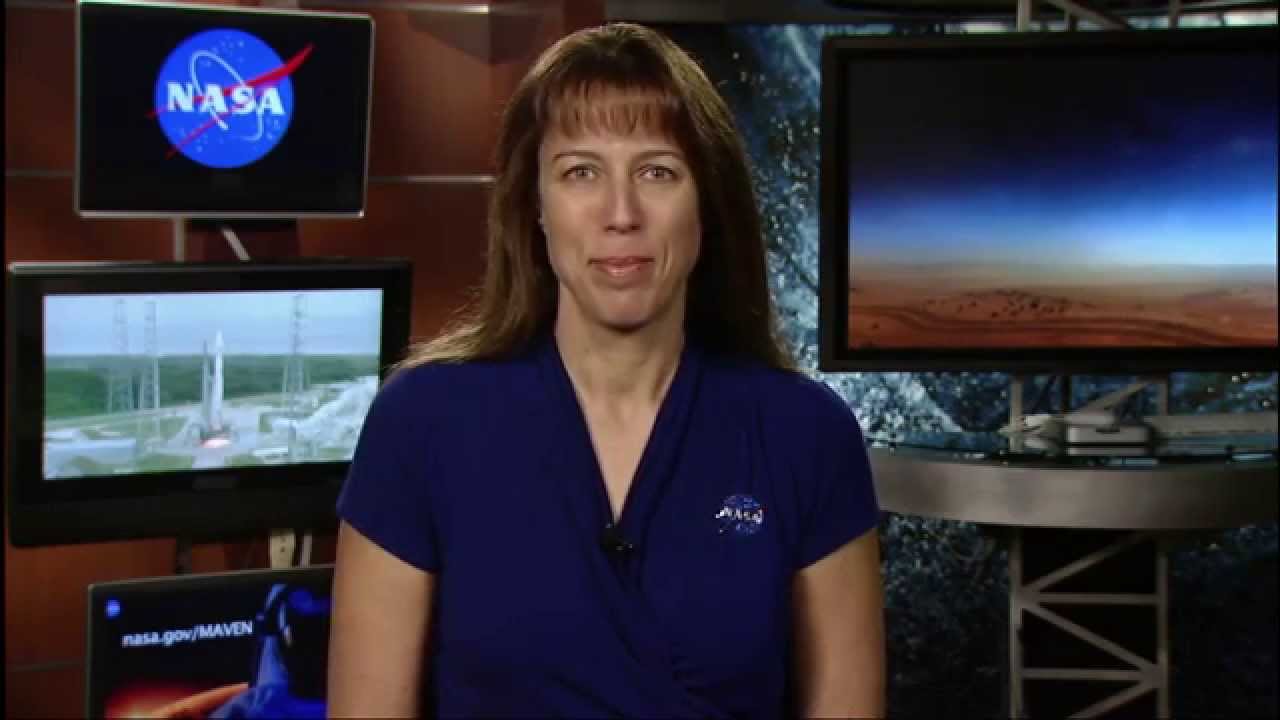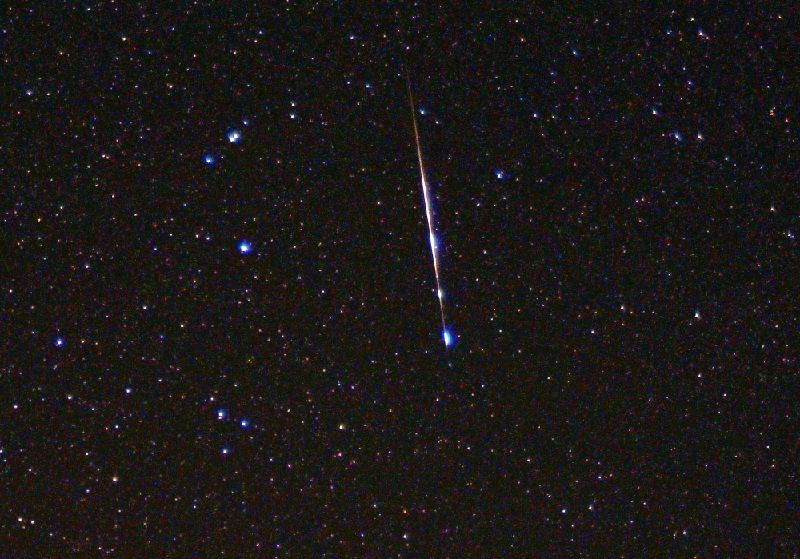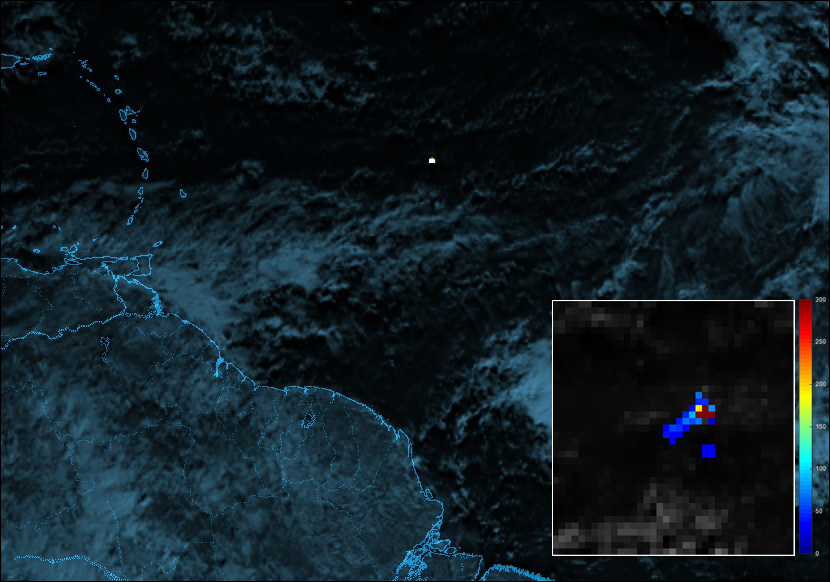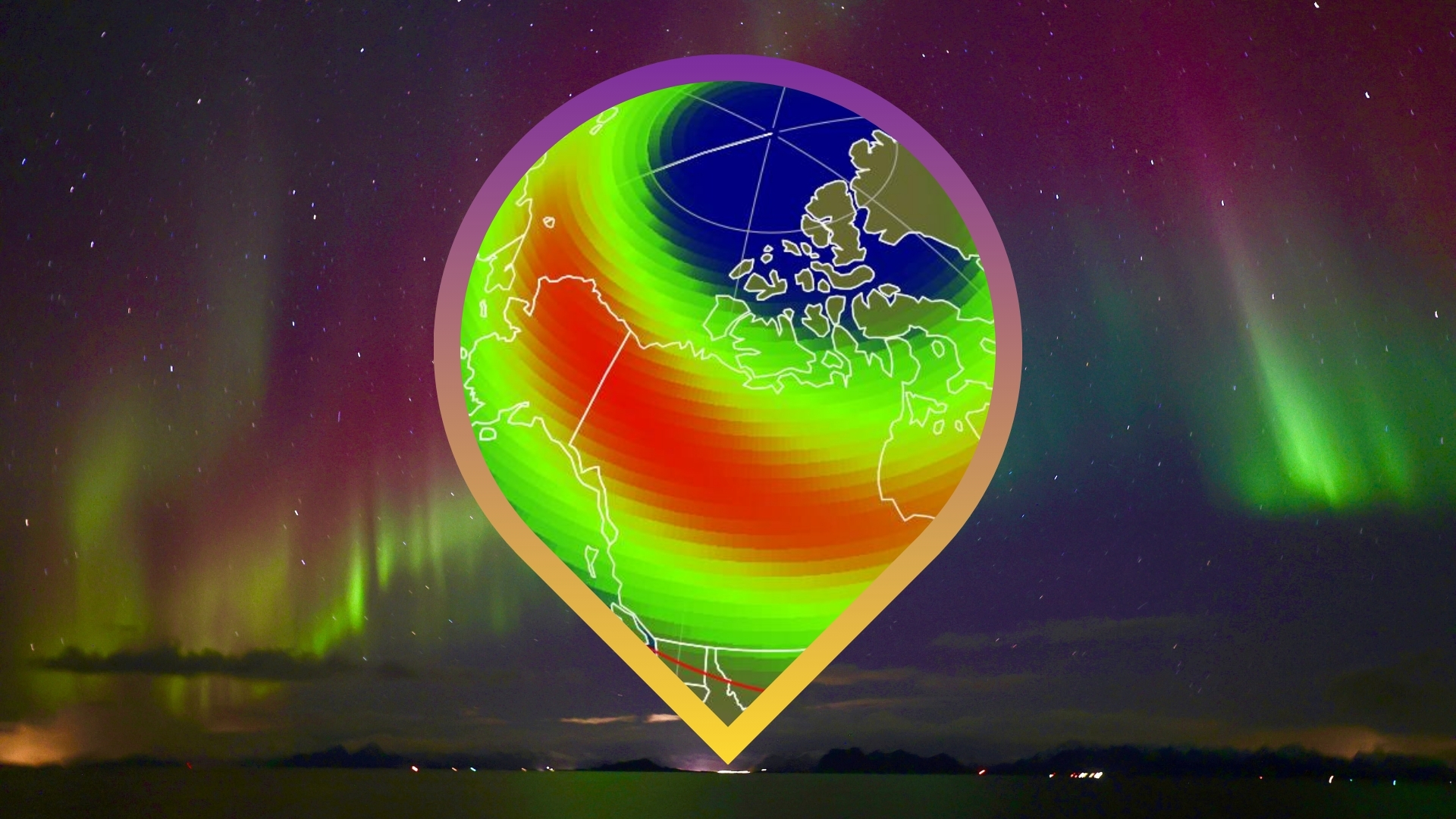Gravity Assist Podcast: Planetary Defense with Kelly Fast
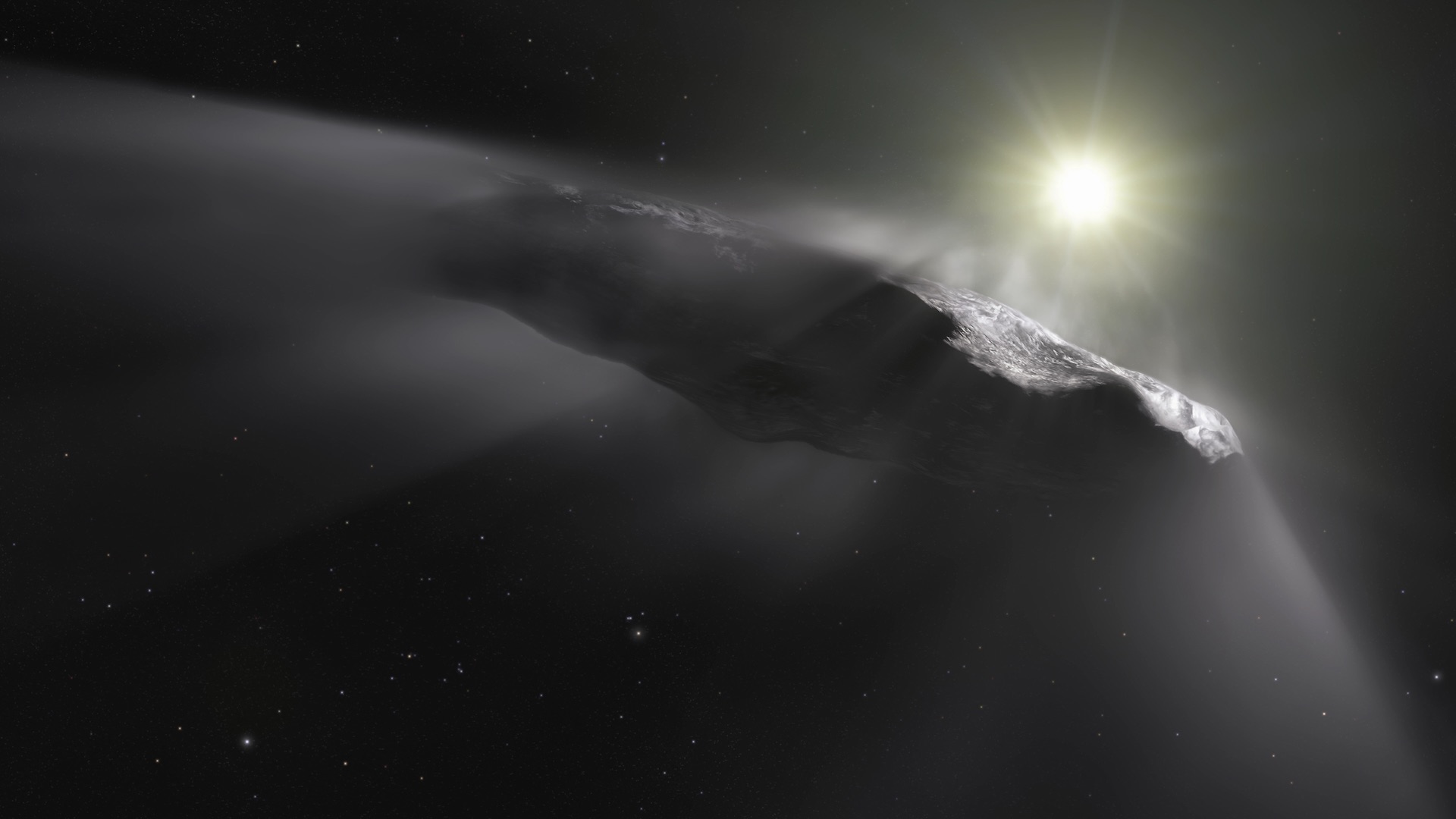
The Gravity Assist Podcast is hosted by NASA's Chief Scientist, Jim Green, who each week talks to some of the greatest planetary scientists on the planet, giving a guided tour through the Solar System and beyond in the process. This week, he's joined by Dr Kelly Fast, who is the Near-Earth Object Observation Program Manager in NASA's Planetary Defense Coordination Office.
You can listen to the full podcast here, or read the abridged transcript below. [Deflecting Killer Asteroids Away From Earth: How We Could Do It]
Dr. Jim Green: To find near-Earth objects we have to scan the whole sky looking for those things that cross our orbit and that may hit our Earth one day. So, there's an array of tools that you use as part of your job. Tell us a little bit about them.
Dr. Kelly Fast: Well, in th Near-Earth Objects Observations Program, the idea is to find near-Earth asteroids before they find us. Ground-based telescopes are used to survey the skies every night to look for near-Earth asteroids and try to discover the ones that haven't been seen before.
These telescopes include the Pan-STARRS telescopes that belong to the University of Hawaii, and the Catalina Sky Survey, which is part of the University of Arizona. So those are the new telescopes that provide us with new discoveries.
Dr. Jim Green: Once you have found them, you also need to know how big they are and maybe their spin rate and some attributes of them, such as whether they're iron or stony meteorites. How do we get that kind of information?
Dr. Kelly Fast: That kind of information comes from other telescopes that seek to characterize these objects. One in particular is actually a NASA telescope on the ground, the Infrared Telescope Facility on Mauna Kea on the Big Island of Hawaii. At that telescope observations are made and spectra taken in the infrared, the part of the spectrum that the eye can't see. From that information it's possible to tell something about what these asteroids are made of, which is important for understanding what sort of hazard they might pose to Earth.
Breaking space news, the latest updates on rocket launches, skywatching events and more!
In addition, there are other telescopes in the space, like NEOWISE, which is the re-purposed Wide Infrared Survey Explorer (WISE), and the same observations are made from space in order to learn more about the characteristics of objects.
Dr. Jim Green: There's another new tool that looks down at the Earth and sees in-falling material. What is that telescope?
Dr. Kelly Fast: It's actually an Earth Science Mission, called the GOES-16 satellite, which is looking at the Earth. There's stuff hitting the Earth all the time, but thankfully it's small material. When you look at the night sky, you see shooting stars. Those are really dust very small rocks hitting the atmosphere from outside, and they make that streak in the sky [as they burn up].
On the GOES-16 satellite is an instrument called the Geostationary Lightning Mapper, or GLM, and it's there to detect lightning—looking down at the Earth to detect lightning. But when meteors travel through the atmosphere they also create a flash of light, and the GLM is detecting those also. It turns out that there's valuable information that you can get from that. So, this is a case where you get this bonus science from a particular instrument.
Dr. Jim Green: What's really neat about that is, as I understand it, there's nearly 100 tons of meteoric material that falls into Earth's atmosphere every day.
Dr. Kelly Fast: That's true. It sounds like a lot of material, but the atmosphere is an incredible protector for us, and so much of that just never even reaches the ground. It burns up in the atmosphere, creating beautiful shooting stars and then, if there's something that's larger, it will create something brighter such as a fireball or a bolide.
Dr. Jim Green: So, as we see fireballs come in, we can then predict where the debris will make landfall. The the debris tells us what type of meteorite it was that came in.
Dr. Kelly Fast: We had an incredible experience in June 2018, when a very small asteroid, just a few meters in size, was discovered eight hours before it impacted the Earth Its designation was 2018 LA. Once it impacted with the Earth's atmosphere, the meteor was seen by surveillance cameras and government sensors and a meteorite was recovered afterwards. That's very important for science to connect the meteorite back to an actual asteroid whose actual orbit was determined, which tells you more about where it came from in the first place.
Dr. Jim Green: In October 2017, an asteroid was found coming through our Solar System. What was that?
Dr. Kelly Fast: The Pan-STARRS telescope in Hawaii was doing its normal Near-Earth Object survey operation, scanning the sky at night looking for new asteroids, and it found one, but the motion of this one was different. It was moving quite fast. And when its orbit was calculated it was realized that it had came from outside our Solar System, from interstellar space, and it was moving so fast that it was going to leave the Solar System. We call the object 'Oumuamua and to be able to come to the conclusion that this isn't one of our own asteroids was a very important discovery.
Dr. Jim Green: The concept that here something that was created in another solar system and was just passing through really energized many of the ground-based astronomers and our scientists wanted to know more about it. And so, there were a lot of observations of 'Oumuamua.
Dr. Kelly Fast: And there was very little time because this asteroid was discovered after it had passed by Earth and was on its way out of the Solar System, so there was limited time to study it.
It's difficult with asteroids because, even as when they are going by the Earth, they still looks like a point of light, unless they are close enough to put radar on it. And 'Oumuamua wasn't. But, there are other things that we could learn. First of all, by looking at the light that's coming from it, you can see how the light is changing, and the light was changing a lot: it was getting brighter and fainter, brighter and fainter. That's not unusual with asteroids because they tend not to always be round. So depending on how that thing is oriented toward you, the light is going to be different. The changing light can tell you about the shape. But, this one was a little more extreme, and it appeared to possibly be even more elongated than other asteroids that have been studied in our Solar System, so that was a neat discovery. [See the Dramatic Increase in Near-Earth Asteroids NASA Has Discovered (Video)]
Dr. Jim Green: Looking at that light over time, the best fit seems to be a cigar- or elongated-shaped object.
Dr. Kelly Fast: There have been some different numbers that have come out in terms of its aspect ratio, meaning like how wide is it compared to how tall it is or its length to its width. It may be as much as 10:1 or maybe more like 5:1 or 6:1, but still something that's longer than what we've generally seen in our Solar System.
There were other properties, too, that were useful for trying to understand more about this object. One thing that was seen was its color, although unfortunately it was a little too faint to take a spectrum of it, but the color still tells you something about it. And this seemed to have a reddened color, which kind of comes with space weathering, by being bombarded by radiation in space.
Dr. Jim Green: What's really exciting about it is, now that we've found one, there must be others?
Dr. Kelly Fast: Even before it was found, it was predicted that such objects should be passing through our solar system. So, this is probably not the only one, it's just the first one that we've seen.
Dr. Jim Green: How many do we expect, now that we've seen this one?
Dr. Kelly Fast: There are folks who do that kind of modeling. Some of them are saying that there should be one inside the Earth's orbit at all times. But telescopes — at least those on the ground — can only look at night so they can only cover so much of the sky. The nice thing is, since this was a pathfinder, it gave an idea of what to look for, and so it might be possible to recognize this sort of thing sooner or perhaps go into older data and look for some things that were missed.
Things weren't quite exactly as they seemed at first because the people who do this sort of modeling really would have expected that this would have been an icy body like a cometary body as opposed to an asteroid. But, no coma or tail were seen when 'Oumuamua was discovered, no atmosphere that forms around as happens when the Sun heats up an icy body such as a comet. But later on, as it continued to be observed, the motion was a little odd. By very carefully measuring its motion and seeing that it was a little off, what it indicated was that this might actually be an icy body after all, because when the ice is heated on comets it produce jets when the gasses are released, and the jets can affect the object's motion, like little rocket motors on there. So it turns out that this asteroid 'Oumuamua may actually be a comet.
Dr. Jim Green: You know, this object is about 700 meters long, and it has a funny, unusual spin to it, like a cigar that is moving in a very unsystematic way. We call it nutating. But if it was a rubble pile made up of loose material, how could it even be held together? So, maybe what is, indeed, holding it together is an icy body that is allowing it to hang in that manner.
Dr. Kelly Fast: There was a lot of discussion about this. Everybody was puzzling over this because a rubble pile object probably wouldn't have been able to hold itself together and rotate like that. So, is it like a big slab of material? And then, how would that have formed? What was its history? The presence of ice adds another piece to the puzzle.
Dr. Jim Green: One of the things I always like to do is ask what your gravity assist was. What were the things that happened to you as you became the planetary scientist you are today?
Dr. Kelly Fast: I just have to credit the people around me. I think of one in particular, Ted Kostiuk of that Goddard Space Flight Center, who I was working for after I got my Masters. And I had had kids, and I was doing science and being a mom and just loving it. He said to me one day, "I want to talk to you about the future." And he encouraged me to go back to grad school and finish my Ph.D. It led to all kinds of things that I never would have expected or planned. So that was a major, major gravity assist for me.
This story was provided by Astrobiology Magazine, a web-based publication sponsored by the NASA astrobiology program. This version of the story published on Space.com. Follow us on Twitter @Spacedotcom or on Facebook.

The National Aeronautics and Space Administration (NASA) is the U.S. government agency in charge of the civilian space program as well as aeronautics and aerospace research. Founded in 1958, NASA is a civilian space agency aimed at exploring the universe with space telescopes, satellites, robotic spacecraft, astronauts and more. The space agency has 10 major centers based across the U.S. and launches robotic and crewed missions from the Kennedy Space Center in Cape Canaveral Florida. Its astronaut corps is based at the Johnson Space Center in Houston. To follow NASA's latest mission, follow the space agency on Twitter or any other social channel, visit: nasa.gov.
